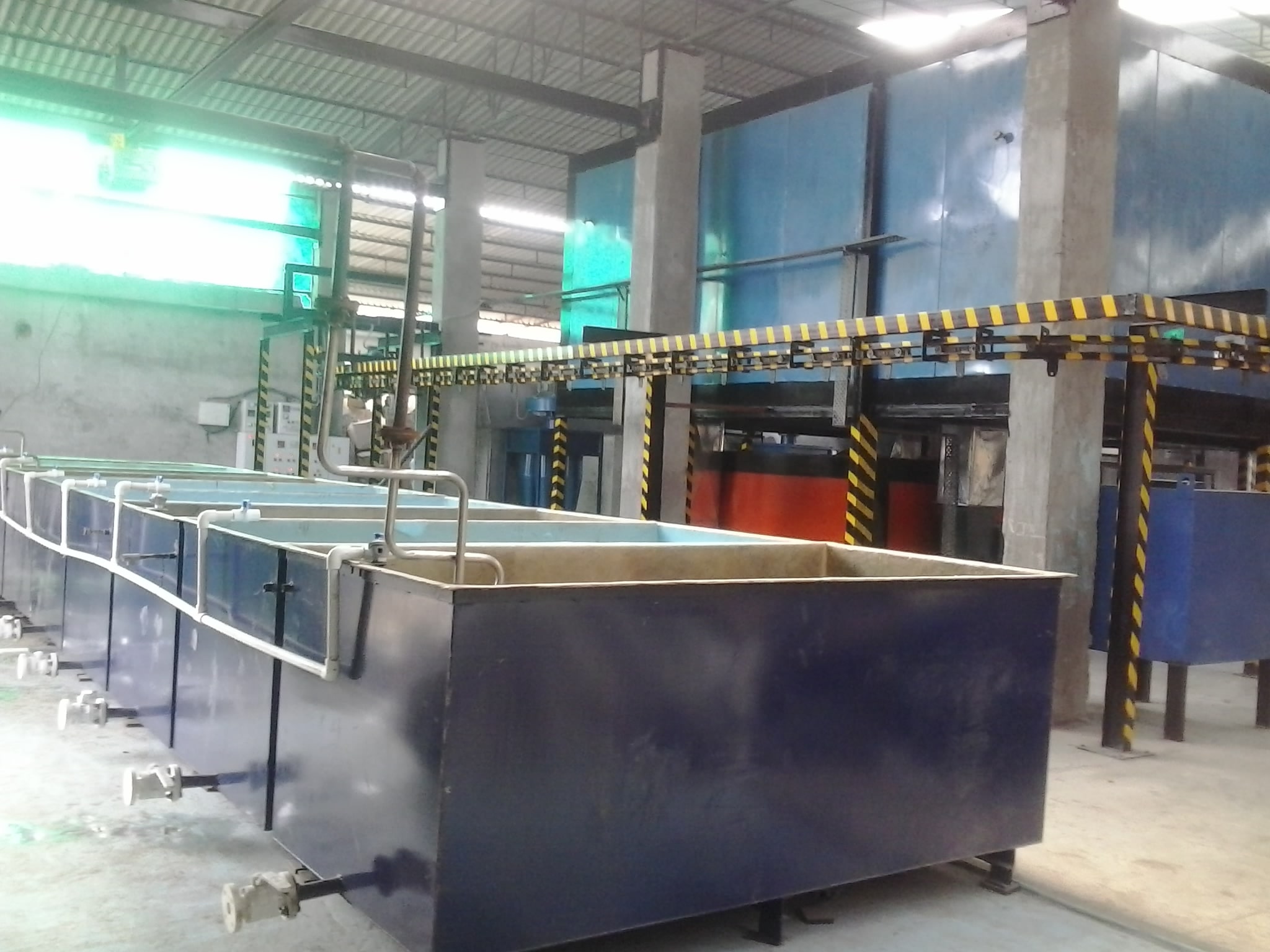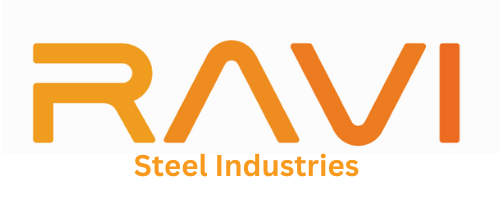The Seven Tank Process: Enhancing Durability with Surface Treatment!
The Seven Tank Process: Enhancing Durability with Surface Treatment!
After the assembly of metal parts, the next crucial step in the manufacturing process is surface treatment using The Seven Tank Process.
The Seven Tank Process, also known as metal phosphating, was introduced as a surface treatment method several decades ago and has since become widely adopted across various industries. The process evolved from the need to improve the performance and longevity of metal components, particularly in applications where corrosion resistance and paint adhesion are paramount. Over time, refinements in chemical formulations and process control have further enhanced the effectiveness and versatility of The Seven Tank Process, making it a fundamental technique in modern metal surface preparation and finishing.
This method also referred to as metal phosphating, is integral for preparing metal surfaces to receive subsequent finishing treatments like painting or powder coating. The Seven Tank Process involves a series of precisely orchestrated steps that cleanse, condition, and prime the metal surfaces, ensuring optimal adhesion and durability of the final coatings. This comprehensive treatment is essential in industries where corrosion resistance, paint adhesion, and surface quality are critical factors for product performance and longevity. In this article, we will delve into each step of this transformative process, exploring its intricacies and the remarkable effects it has on enhancing the properties and aesthetics of metal surfaces.
Understanding Metal Surface Preparation
Metal surface preparation is a critical step in industrial processes, particularly before applying treatments like The Seven Tank Process. It involves several key aspects that are essential for achieving optimal results in metal finishing.
Purpose of Surface Preparation
The primary purpose of metal surface preparation is to create a clean and properly conditioned substrate that is ready to receive coatings or treatments. By removing contaminants such as dirt, oil, grease, rust, and scale, surface preparation ensures that the applied coatings adhere effectively and uniformly to the metal surface.
Importance of Cleanliness
Cleanliness is of utmost importance in metal surface preparation. Contaminants on the metal surface can impair the adhesion of coatings, leading to premature failure, corrosion, or reduced performance of the finished product. Additionally, a clean surface allows for better visual inspection and quality control during subsequent processes.
Role in Achieving Strong Adhesion
One of the key goals of metal surface preparation is to promote strong adhesion between the substrate and the applied coatings. A clean and properly prepared surface provides the ideal foundation for coatings to bond securely, ensuring long-lasting performance and durability of the finished metal product.
Impact on Corrosion Resistance
Surface preparation significantly contributes to the corrosion resistance of metal components. Removing contaminants and creating a clean surface helps prevent the initiation and propagation of corrosion, thereby extending the lifespan of metal parts in various environments.
Optimizing Surface Condition for Treatments
Surface preparation also involves optimizing the surface condition to suit specific treatments like The Seven Tank Process. Properly prepared surfaces ensure uniform treatment application and facilitate the desired properties, such as enhanced corrosion resistance, paint adhesion, or improved appearance.
Overview of The Seven Tank Process Steps
The Seven Tank Process involves a sequence of meticulously designed steps:
Degreasing
The process begins with degreasing, where contaminants such as oils, greases, and dirt are removed from the metal surface using alkaline cleaners. This step is crucial to ensure effective subsequent treatment.
Water Rinse
Following degreasing, the metal is rinsed thoroughly with water to remove residual cleaning agents and contaminants.
Acid Pickling
Acid pickling is employed to remove oxide layers, scales, and other surface impurities. This step exposes the bare metal surface for optimal coating adhesion.
Activation
Activation involves treating the metal with chemicals that enhance surface adhesion, promoting a strong bond between the substrate and subsequent coatings.
Zinc Phosphate Coating
The application of a zinc phosphate coating provides excellent corrosion resistance and serves as an ideal base for paint adhesion.
Passivation
Passivation involves the deposition of a protective layer to further enhance corrosion resistance, particularly in outdoor or harsh environments.
Final Rinse
The final rinse removes any residual chemicals and prepares the metal surface for subsequent processes or finishing.
Detailed Description of Each Step
Each step in The Seven Tank Process serves a specific purpose:
- Degreasing: Removes organic contaminants that can interfere with subsequent treatment.
- Acid Pickling: Cleans the metal surface by removing oxides and scales.
- Activation: Prepares the surface for optimal coating adhesion.
- Zinc Phosphate Coating: Provides corrosion protection and promotes paint adhesion.
- Passivation: Forms a protective layer against rust and oxidation.
Applications and Industries Using The Seven Tank Process
The Seven Tank Process finds extensive applications across various industries, including automotive manufacturing, aerospace, and the production of household appliances. It is particularly valued for its ability to enhance the durability and performance of metal components in demanding environments.
Benefits of The Seven Tank Process
The advantages of The Seven Tank Process are manifold:
- Improved adhesion of coatings, leading to longer-lasting finishes.
- Enhanced corrosion resistance, prolonging the lifespan of metal parts.
- Effective cleaning and conditioning of metal surfaces, ensuring quality finishes.
Comparative Analysis with Other Surface Treatment Methods
Compared to alternative methods such as chromate conversion coating or powder coating, The Seven Tank Process offers distinct advantages in terms of performance, efficiency, and environmental impact.
Environmental Considerations
Effluent treatment and waste minimization are essential aspects of The Seven Tank Process to ensure compliance with environmental regulations and minimize the ecological footprint.
Quality Control and Inspection
Stringent quality control measures are implemented throughout the process, including testing methods and adherence to industry standards to guarantee the effectiveness and reliability of surface treatments.
Future Trends and Innovations
Advancements in chemical formulations and the integration of automation technologies are shaping the future of The Seven Tank Process, enhancing efficiency and sustainability in metal surface treatment.

Conclusion
The Seven Tank Process stands as a cornerstone of metal surface treatment, offering unparalleled benefits in terms of coating adhesion, corrosion resistance, and surface conditioning. Its widespread adoption across industries underscores its transformative effects on metal surfaces, ensuring durability and performance in diverse applications.
For more updates and insights, do check out our blogs. Contact Ravi Steel Industries the best furniture store in Raipur at +91 62653 19027 or email us at ravisteelindustriess@gmail.com for all your furniture needs in Raipur. Quality craftsmanship and personalized service await you!
